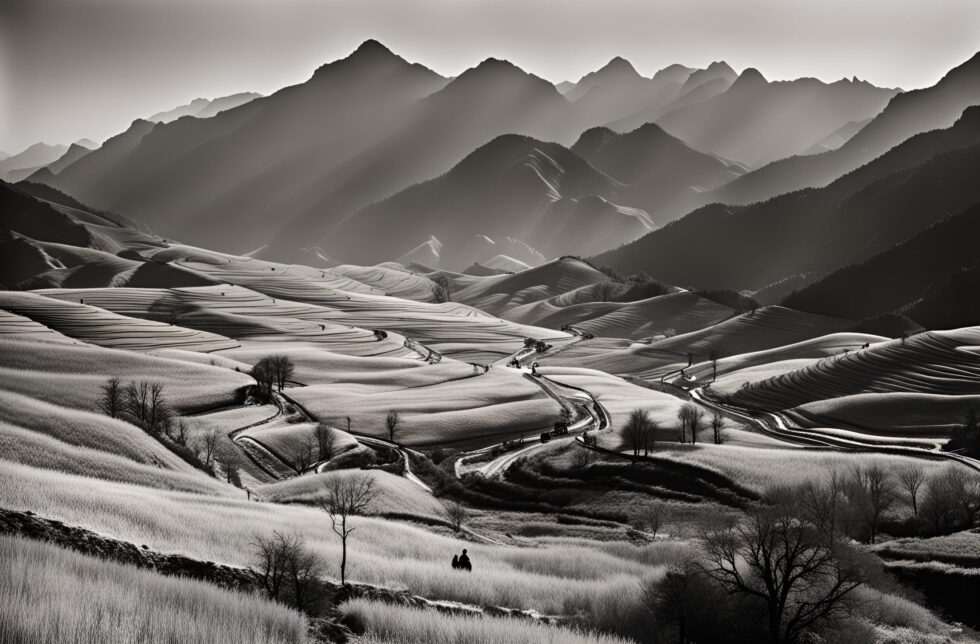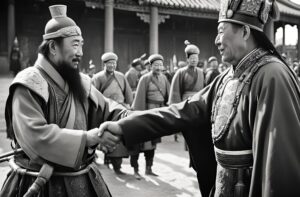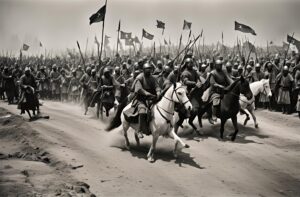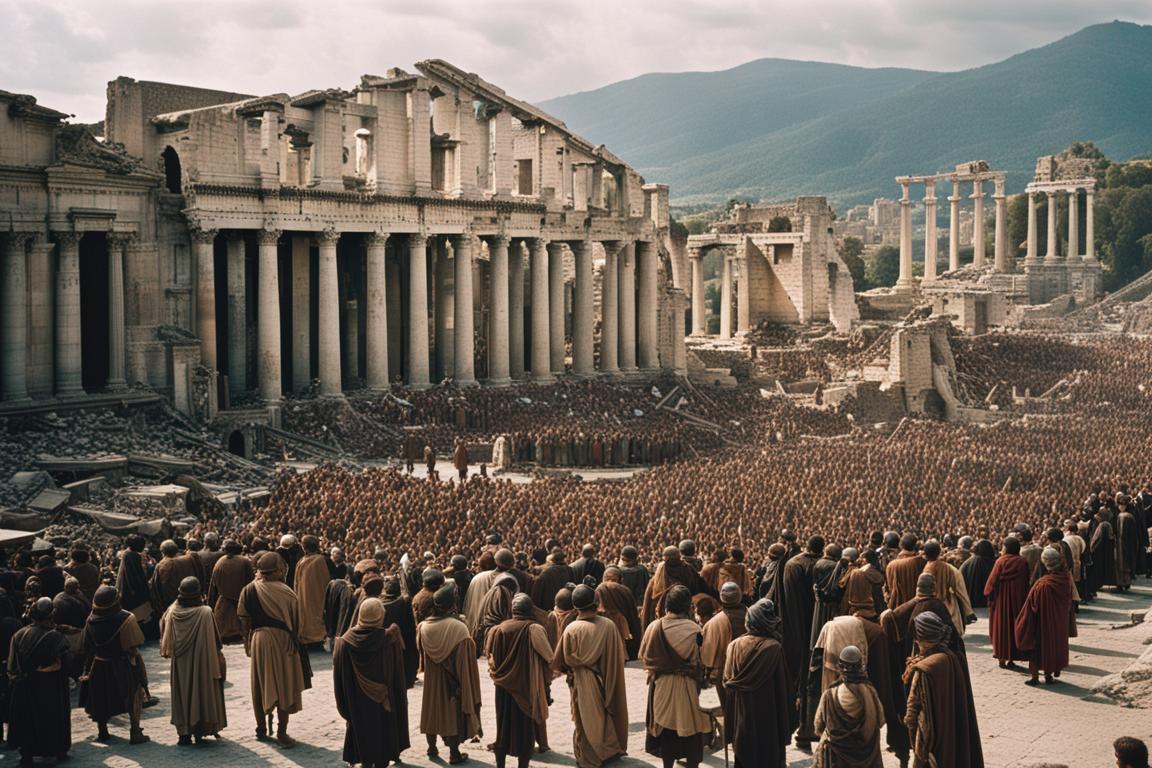
In a parallel universe where China never constructed the Great Wall, the history of Asia, and indeed the world, was shaped by a markedly dissimilar chain of events. From the outset of the Warring States period, the decision against the construction of this monumental barrier laid the foundation for a complex web of human relations, alliances, and conflicts.
Absent the Great Wall as a bulwark, the northern tribes, mainly the Xiongnu, Mongols, and other nomadic groups, faced fewer restrictions in their southward migrations. This led to an unparalleled merging of cultures between the sedentary Chinese civilizations and the drifting tribes. The Chinese, advanced in agriculture, artisanal skills, and ironwork, found themselves sharing these progressive techniques with the resourceful and strategic nomads.

This synergy did not eliminate conflict but reshaped it in unpredictable ways. Various Chinese states, including Qin, Wei, and Zhao, experienced periods of warfare and alliances with the nomadic tribes. These interactions cultivated an innovative blend of militaristic strategies, fusing Chinese engineering with nomadic cavalry tactics. Over time, the Chinese states and the northern tribes formed a complex political landscape, where power was as influenced by cultural exchange and commerce as it was by military dominance.
As the centuries rolled on, a potent leader of mixed nomadic and Chinese descent, Bayan, ascended to prominence. His comprehensive understanding of both worlds enabled him to unite disjointed tribes and Chinese factions under a singular banner. Through astute diplomacy and strategic marriages, he won the loyalty of both the Great Plains warriors and the river valley farmers. His dominion, christened the Bayan Dynasty, spanned from the fertile Yangtze basin to the expansive steppes of Mongolia.
The Bayan Dynasty ushered in a new era of exploration and scientific growth. The capital city, christened Bayan’s Solace, emerged as a hub of innovation, fostering an exchange of ideas among scholars and inventors from diverse cultures. The lack of the Great Wall encouraged a spirit of openness and curiosity. The Silk Road prospered like never before, with caravans transporting goods, ideas, and technologies across the continent. This Golden Age witnessed the invention of wind-powered mills, advanced astronomical tools, and early printing techniques.
However, the unrestricted movement across the Asian continent also posed significant challenges. As Bayan’s empire grew, its borders became increasingly difficult to defend. The once-fluid alliances began to strain under the pressures of expansion and governance. Resistance and power struggles became more prevalent, particularly with the rise of ambitious warlords within the empire. Following Bayan’s death, the absence of a successor with his vision and charisma caused fragmentation and internal strife.

Amid this period of instability, a new threat arose from the west: the European Crusaders. Lured by stories of the prosperous Bayan Dynasty and in pursuit of wealth and converts, they launched a series of attacks on Asia. The Europeans met substantial resistance from the now-fractured remnants of Bayan’s empire. Despite internal discord, the cultural unity, forged over centuries, enabled the Asian forces to mount a robust defense. The Crusaders, unfamiliar with the vast, complex alliances and the lethal efficiency of combined nomadic and Chinese warfare tactics, faced significant setbacks.
The confrontations between the Crusaders and the Asian forces initiated another wave of cultural exchange. Crusaders who settled in the region brought with them mechanical inventions and knowledge from the Western world. Similarly, Asian scholars traveled to Europe and shared their advancements in medicine, engineering, and philosophy. This dissemination of knowledge sped up the Renaissance in Europe and triggered a scientific revolution in Asia.
By the onset of the 16th century, the world had transformed into a tapestry of interconnected civilizations. The seeds sown by the decision not to build the Great Wall had blossomed into a world where the East and West were not adversaries but interlaced partners in progress. Nations collaborated on ambitious projects, such as the construction of the first transcontinental railroad, connecting the Bay of Bengal with the Baltic Sea. This crucial railway not only facilitated trade but also symbolized the unity of human endeavor.
As the modern age unfolded, the legacy of the Bayan Dynasty and the merging of cultures greatly influenced the global political landscape. International councils were established, bringing together representatives from all corners of the globe to address shared issues, from climate change to economic inequity. The spirit of collaboration and mutual respect, born from centuries of interaction and shared history, guided human progress into a new era of peace and prosperity. In this version of history, the absence of the Great Wall resulted in a more interconnected, collaborative world.




